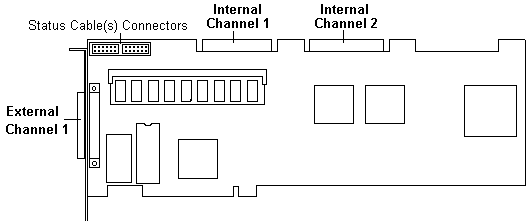|
|
| SCSI ID | Bay | Device |
|---|---|---|
| Non-Disk-Array Models | ||
| 6 | 1 | Hard Disk Drive 1 |
| 3 | 4 | CD-ROM Drive |
| 7 | N/A | SCSI-2 Fast/Wide PCI Adapter |
| Disk-Array Models 2 | ||
| 0-5 3 | 1-6 | Hot-Swappable Hard Disk Drives 4 |
| 6 | 7 | CD-ROM Drive |
| 7 | N/A | SCSI-2 Fast/Wide PCI-Bus RAID Adapter |
Non-disk-array models that are supplied with a preinstalled wide hard disk drive use a 16-bit internal connector. Non-disk-array models that are not supplied with a preinstalled hard disk drive or supplied with a narrow hard disk drive use an 8-bit internal connector.

Please see the LEGAL - Trademark notice.
Feel free - send a  for any BUG on this page found - Thank you.
for any BUG on this page found - Thank you.